September 27, 2015
Martha O'Kennon
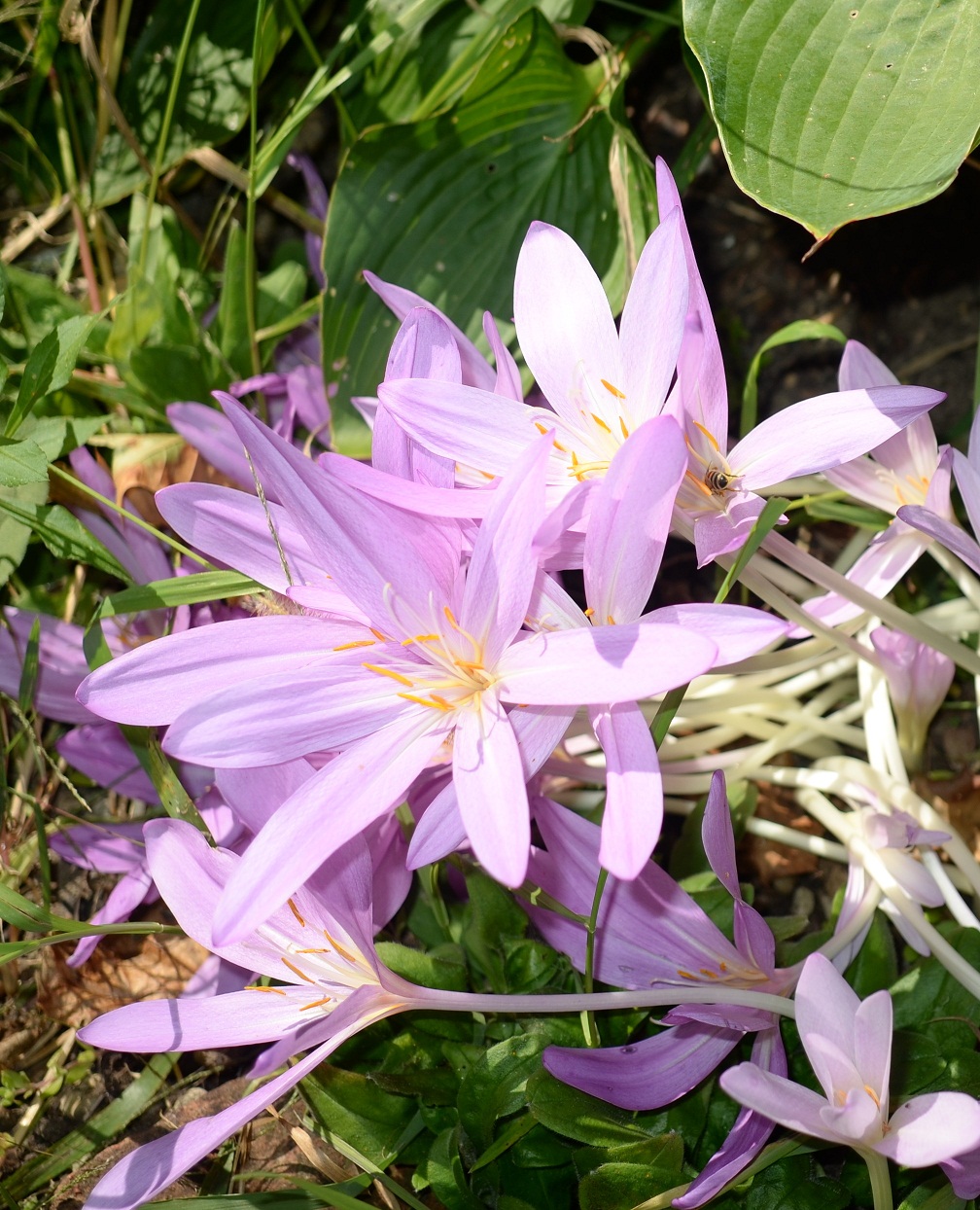


Unmistakable signs of fall! The colchicums are falling all over each other. What are colchicums? In the spring the bulb sends up large floppy green leaves. Then nothing. But a few weeks into September, here is what looks like a huge floppy crocus blossom. Any rain or wind will blow them over. But this year they outdid themselves and have been blooming for a few days. Around the corner, the first of the big maple trees to turn already has the beginnings of a splendid show to come. And last, one of the pink asters waited to bloom all over. Many of the pink asters failed to set buds all over the plant, but what did set are just magnificent. I don't mean magnificent in the sense that people stop their cars to ooh and aah over them. But up close they are the reward of waiting another year to see them.
Remember that there is information in the name of the file for each image. You can see it by mousing over the image - look at the lower left of the screen.
I would try clicking on the image. If the little "+" sign appears, it means you can enlarge again. While it is in "+" mode, click on something you want to see more clearly and it will zoom to that section. Then the info is displayed in the address line above. If the image has been cropped
so that clicking on it doesn't result in a larger picture, you can always hit control plus to increase the size of the image.
Oh- one more tree picture, worthy of center stage. Now we enter the dangerous period of autumn, extremely hazardous. While walking on a campus sidewalk, I heard something large pounding onto a car, this time fortunately only a small branch from one of the pair of huge walnut trees just over the sidewalk. But zoom into this image to see a veritable arsenal of heavy green spheres. You walk this path with a good helmet, as the walnut, a lowly wisp of a nut, is enclosed in a green protective package nearly 3 inches across. Careful!
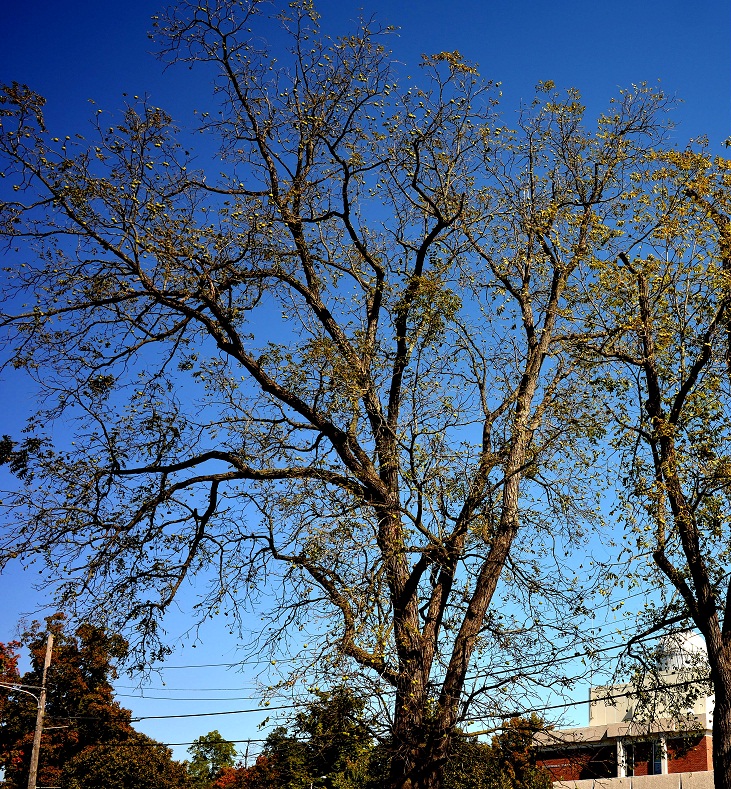 The trumpetvine is once more devoid of trumpets, the goldenrod is now passé almost everywhere. Last year I could drive to the Whitehouse Nature Center and still find some golden patches with a humming bee and wasp population, but this year theirs is like mine with barely a touch of gold. But there is still one way to get wasps into your camera range. Eat outdoors. Wasps are drawn to sweet -- remember how they land on your orange pop at picnics? Well, yesterday I found the next best thing. I'd made some corn on the cob and was happily savoring it while lazing beside the pond. Suddenly the bombardiers were buzzing noisily about my ears. I held up a piece of corn in a gesture of peace, but the most aggressive of the buzzers hummed in my ear, "Just drop it and get lost". This Downy Yellowjacket worker fell to. I've rarely seen one in such a state of rapture. She stayed at the ear till the green flies overwhelmed it. You don't often see the external mouthparts splayed so wide open. What a feast!
The trumpetvine is once more devoid of trumpets, the goldenrod is now passé almost everywhere. Last year I could drive to the Whitehouse Nature Center and still find some golden patches with a humming bee and wasp population, but this year theirs is like mine with barely a touch of gold. But there is still one way to get wasps into your camera range. Eat outdoors. Wasps are drawn to sweet -- remember how they land on your orange pop at picnics? Well, yesterday I found the next best thing. I'd made some corn on the cob and was happily savoring it while lazing beside the pond. Suddenly the bombardiers were buzzing noisily about my ears. I held up a piece of corn in a gesture of peace, but the most aggressive of the buzzers hummed in my ear, "Just drop it and get lost". This Downy Yellowjacket worker fell to. I've rarely seen one in such a state of rapture. She stayed at the ear till the green flies overwhelmed it. You don't often see the external mouthparts splayed so wide open. What a feast!
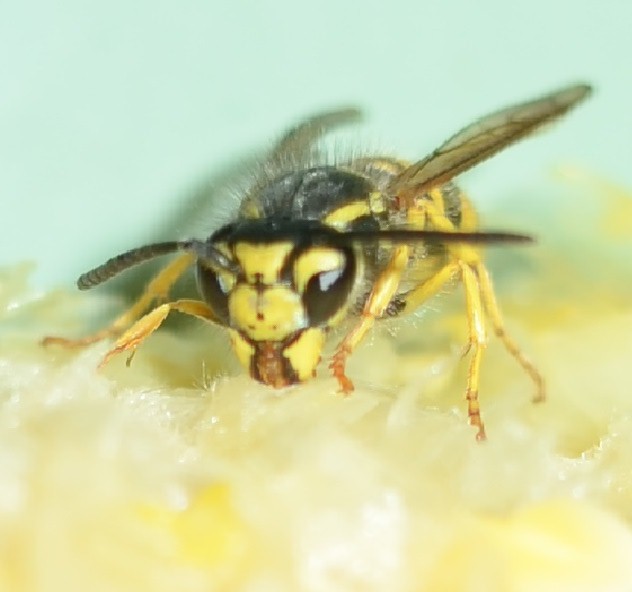
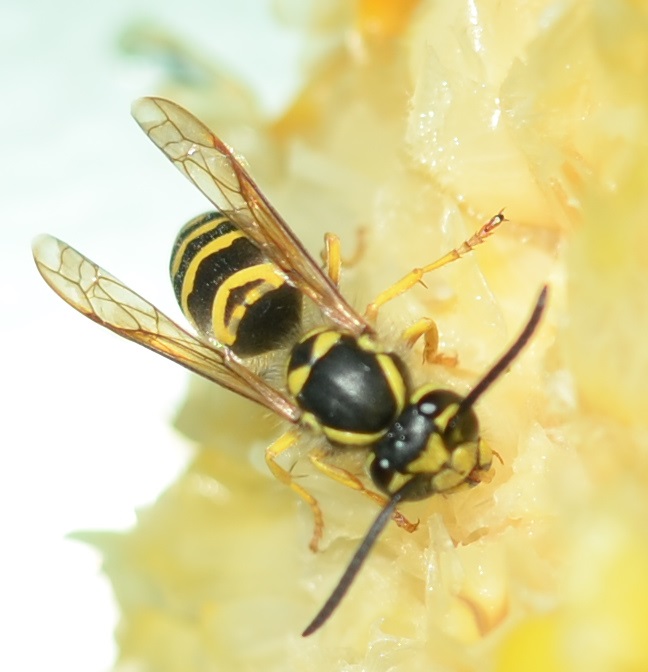
We still saw members of the Ancistrocerus genus, a multi-species group of mostly yellow on black rings. They are the ones that sometimes have a "happy-face" on their thoraces. This one seems to have only the eyes, no smile. Third is another probable member of the Ancistrocerus genus: this one has a different configuration about its abdomen. Last, a female northern paper wasp. We don't see them now in the quantities of last month. The European papers still visit the pond, either to drink or for water to process plant fibers into paper for their nests.
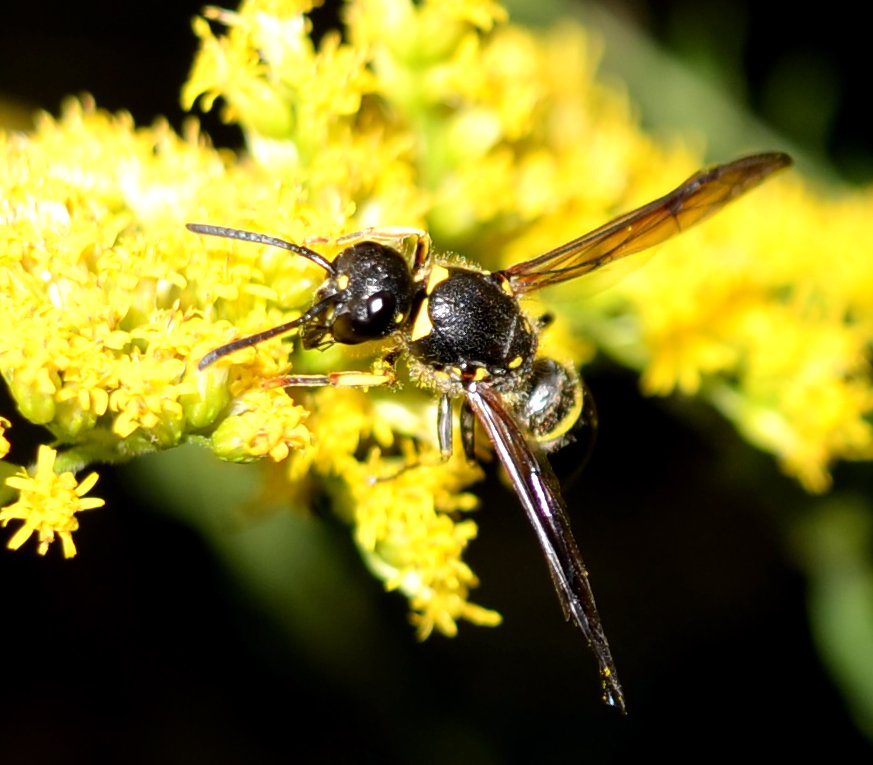
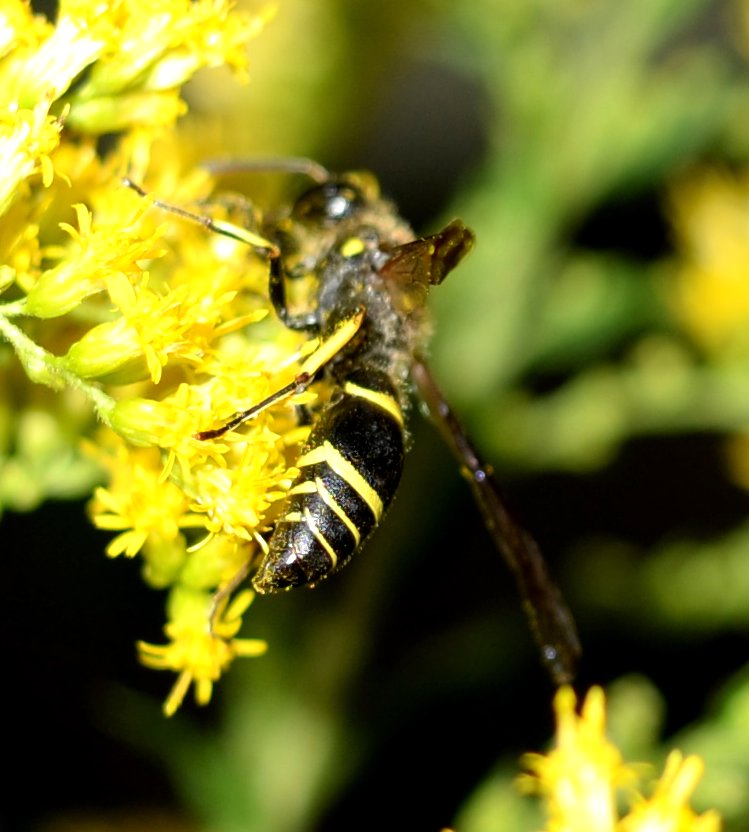
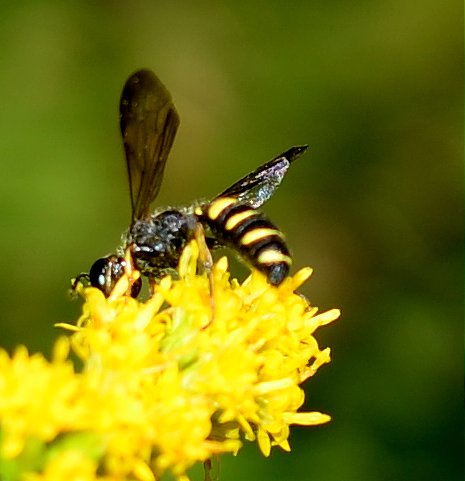

Last week we were introduced to the tiny red-abdomened ichneumon wasp. A female could still be found on the gone-by goldenrod. Since the flowers were about out of nectar, she may make her living searching for one of the many tiny Lygus plant bugs - they're only about 2-3 mm long, so you have to look very hard for them. The next, also an ichneumon wasp, may be Messatoporus discoidalis or maybe not. Here is the bugguide page I submitted in july. You can search there for more information and more possibilities.
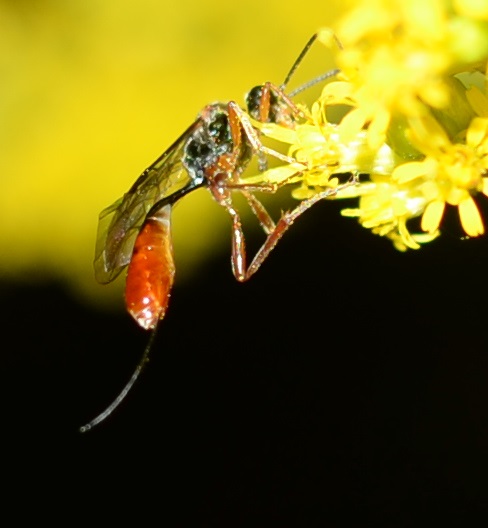
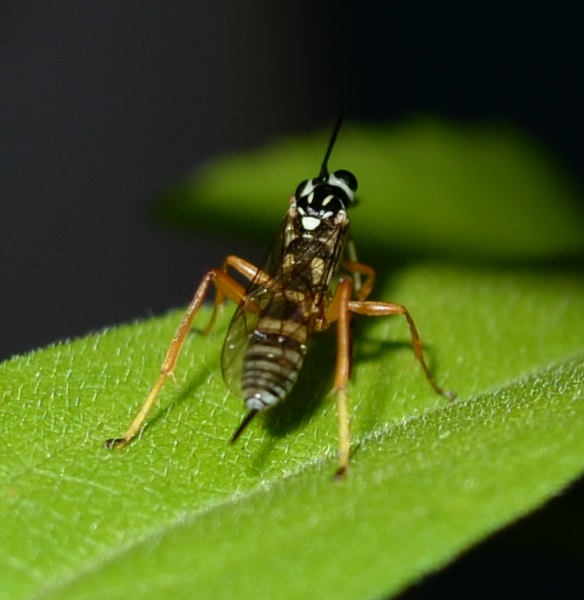
Let me go back to the Lygus bugs mentioned before. Here is the adult, which you've seen before, and a nymph, which was walking up the shop outer wall a couple of days ago, on legs that looked like plastic toy limbs. It was in such a strange position! But when I rotated it so that its feet were on the ground, so to speak, and then did some creative tweaking it was then recognizable as a bug, and Ken Wolgemuth of Bugguide.net pointed it out as the nymph of that very Lygus bug. Would YOU have recognized it?
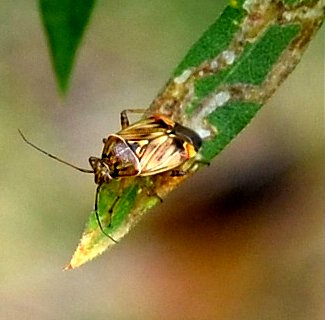
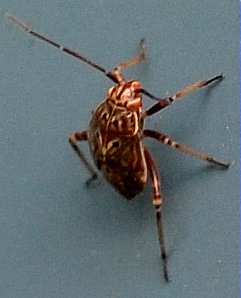
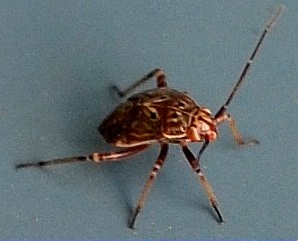
About the same time as I found the Lygus nymph, I also saw another creature in what looks like a baby dress that ties together at the feet. It was also walking briskly up the wall. Dusk was upon us so that is about all the photographing I could muster. It now seems to me that the "bunting" was coming loose, and that what I saw was most likely an insect in the process of escaping its old casing. Of course, all this was coming clear while cropping the pictures, and so I lost my chance to go back out and try to find the little escapee.
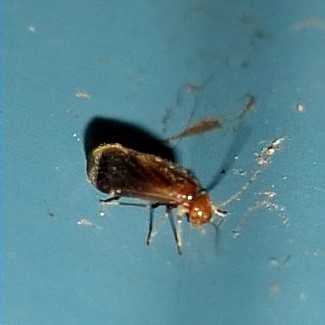
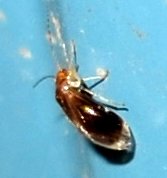
Other than the Lygus plant bugs, were there any others? Why, strange you asked. There were more assassin bug nymphs than ever, in several stages of development. This first one seems the furthest along. The next seems to be shielding its eyes from the glare of the flash. And the candy-striped leafhoppers seem to have weathered their bioluminescence scandal in good color. Oh! Surprise! I had just figured that the blog was as long as it was going to get, stepped out to see the gang and right on the side of the house was this big maroon bug, at least an inch (not even counting the legs or antennae). It turns out to be called a "leaf-footed bug", whereas to me it looks as if it has leaves on its whole hind legs.
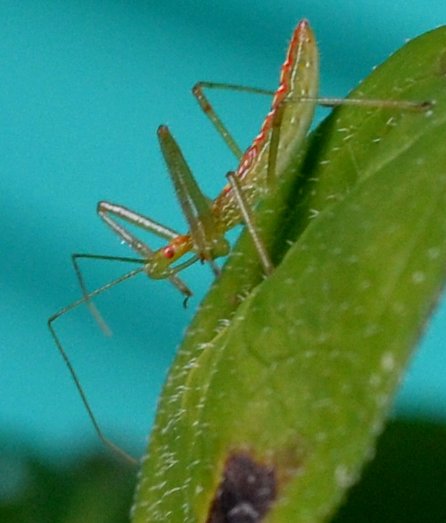
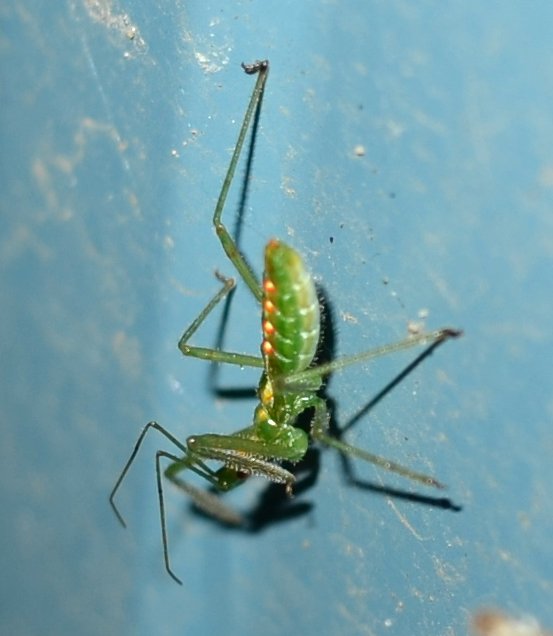
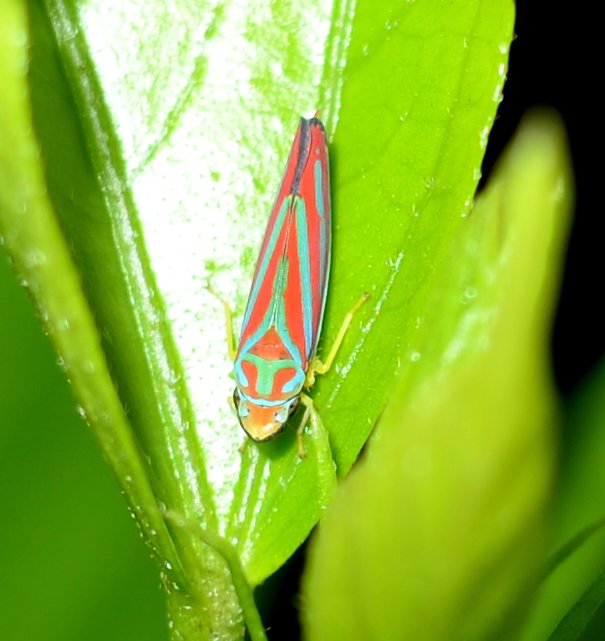
Oh! Surprise! I had just figured that the blog was as long as it was going to get, stepped out to see the gang and right on the side of the house was this big maroon bug, at least an inch (not even counting the legs or antennae). It turns out to be called a "leaf-footed bug", whereas to me it looks as if it has leaves on its whole hind legs. The diagnosis is back already! It's Acanthocephala terminalis.
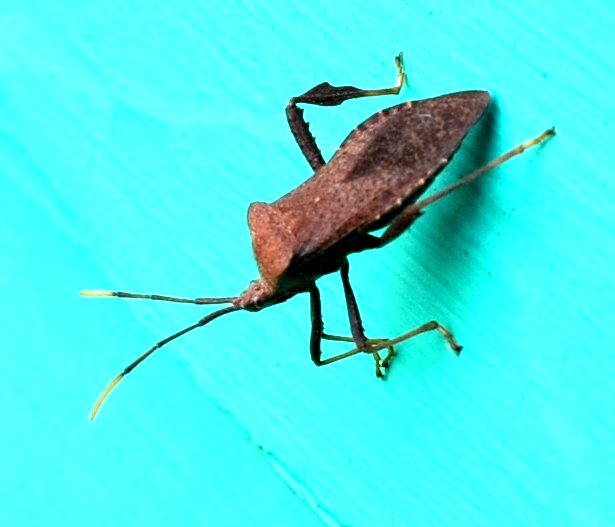
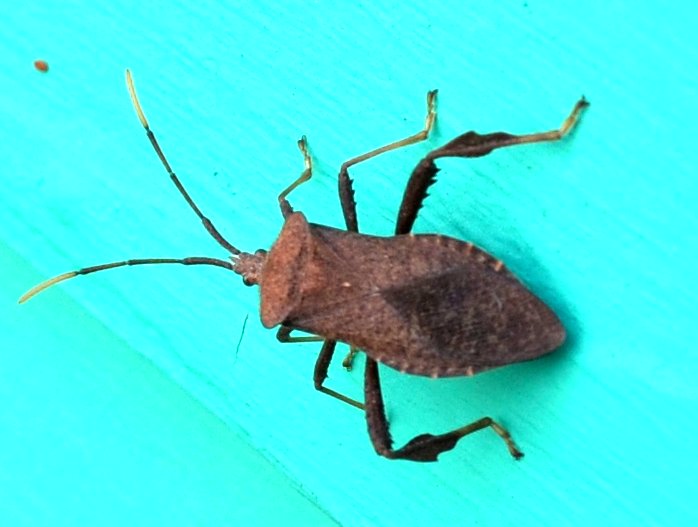
I don't remember seeing many butterflies lately, only (of course) an elusive Monarch, the omnipresent cabbage white and a silver-spotted skipper, who DOES seem the worse for wear.
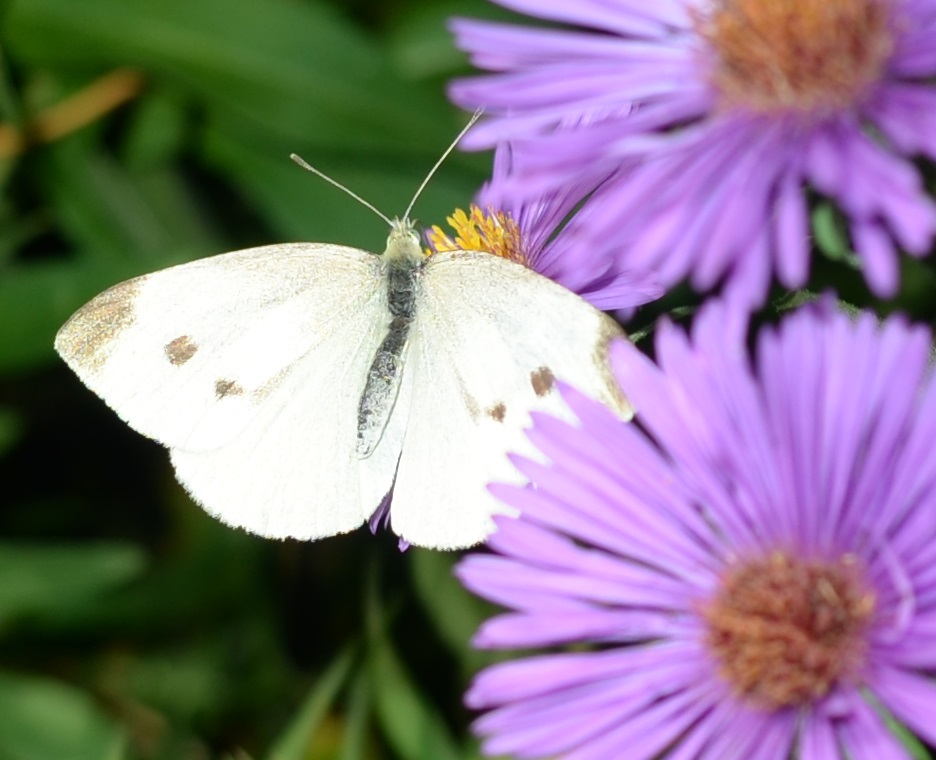
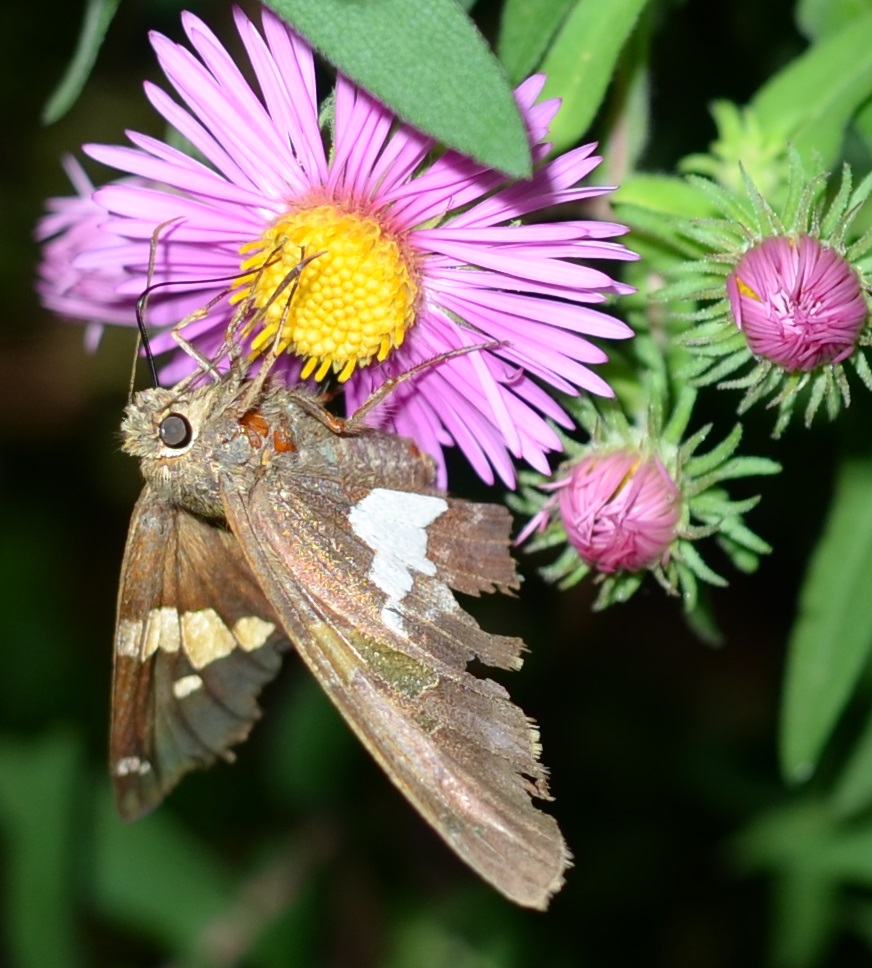
It was an exciting week for hoverflies. We've added a few to our collection, and actually were able to put some tentative names to them. The Toxomerus geminatus with their delicate markings were visible almost every day on some flower or plant, but I only got one shot this week. I only saw one of tbese Eristalis transversa (this one's a female -- it turns out that the male has a bit fancier pattern. Look closely or you might mistake E. transversa for this Helophilus fasciatus. We saw some of those earlier in the season down by the pond, but not so gaudily colored.
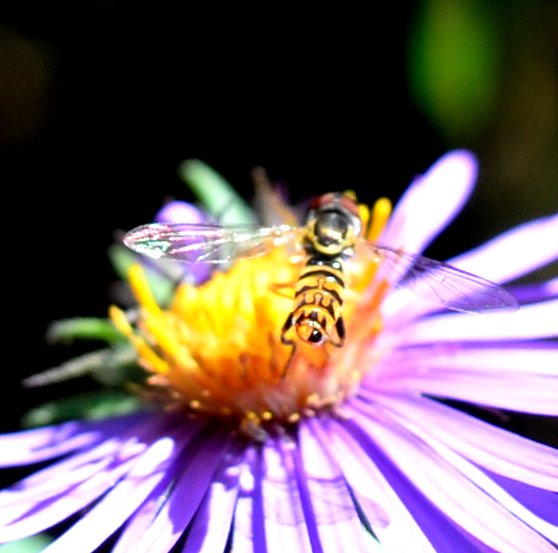
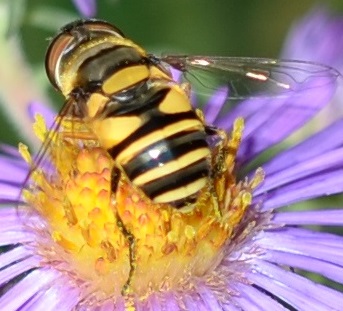
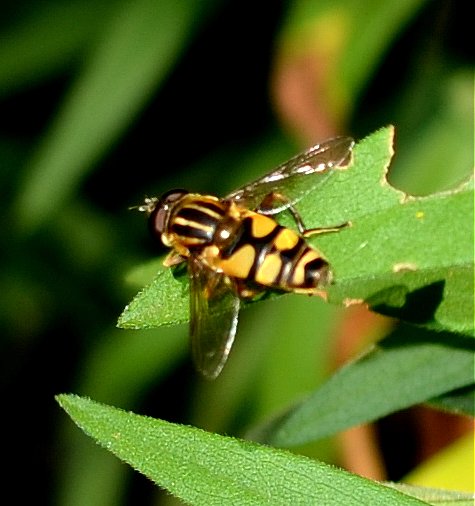
One day this dark little hoverfly seemed to be mimicking a bee, and then this other kind appeared and also seemed to mimic a bee, but its coloring is much lighter. Of course it would have brown wings, making it very difficult to see any bee-like markings. Then I discovered a shot that showed part of the abdomen from under the wing. Nice dark gold and brown/back. They don't call it a bee mimic, but it fooled me at first! The big thing that fooled me was that all these are the same species, but the males appear blacker. That's the second example of sexual dimorphism we've seen this week.

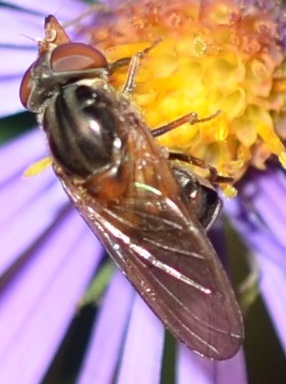
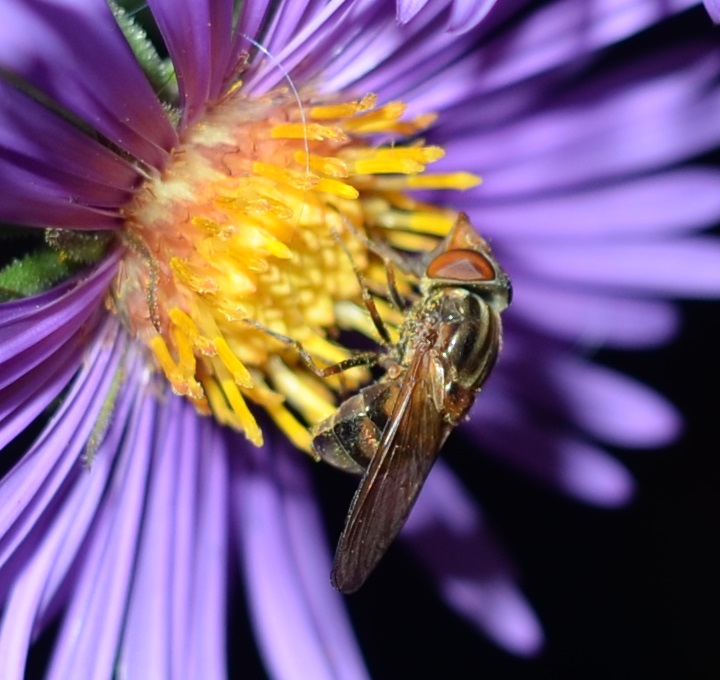
Now I'm going back over some of my older pictures and re-naming some of them as I learn more. Here are some that look so similar, but apparently aren't the same. Last year I was gaily labeling all of these Sphaerophoria. Apparently it is very hard to identify the Sphaerophoria without a scalpel. These are probably Eupeodes subgenus Matasyrphus. See if you can spot tiny differences in them.
 female a 9 20 15.jpg)


Among other flies, there were a lot of the ones you are probably tired of looking at. A few mosquitoes, a couple of crane flies, including the block-printed one. If you really want to see them, please make a great hew and cry, whatever a hew is. But there WERE of course bees. Here is a mason bee (that's the one that is a fantastic pollinator and collects pollen on its tummy, but doesn't make honey for human use - we need both kinds.) I believe you've seen the green sweat bees, and may even be tired of them, but here is one female - they love their asters - and one little male, still fast asleep early in the morning with eyes open, and flower rumpled.
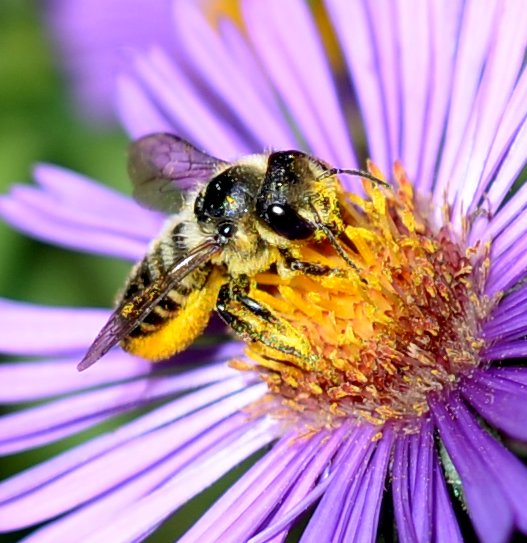
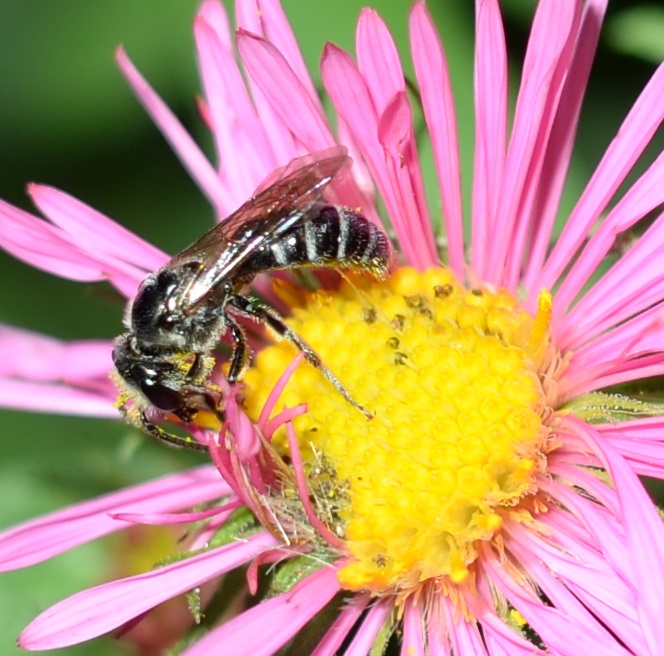
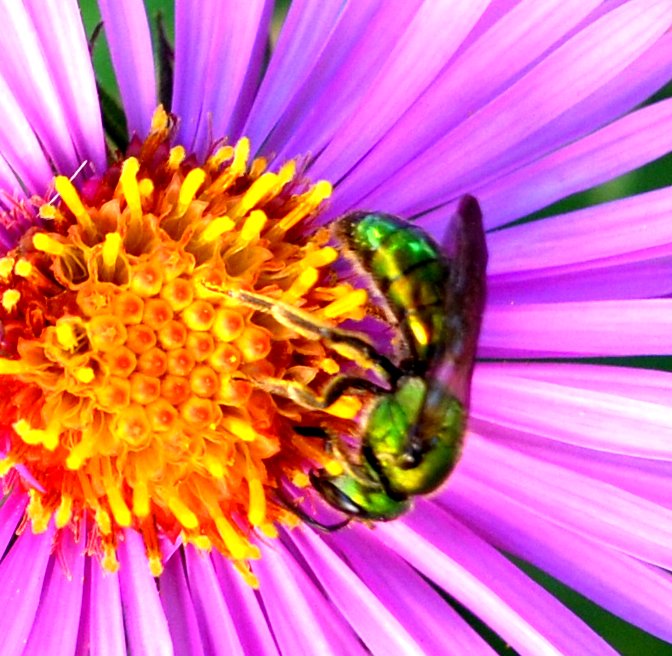
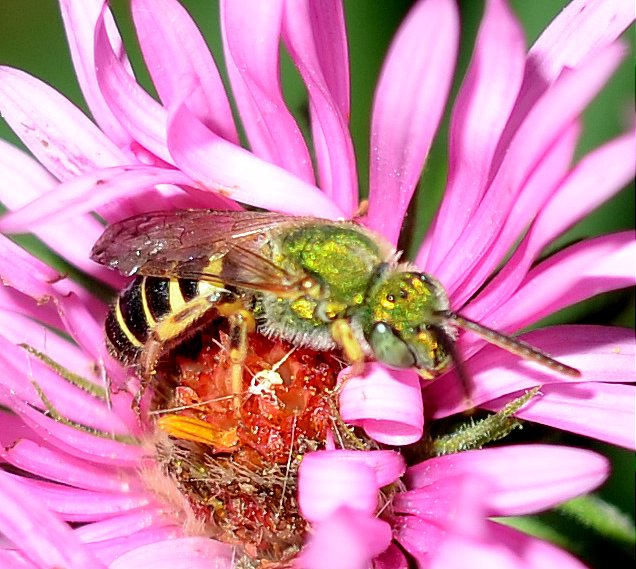
I just have to go back a year to when I got close enough to see the whites of this fellow's eyes. Remember that hairy eyeball? That was from September 17, 2014.
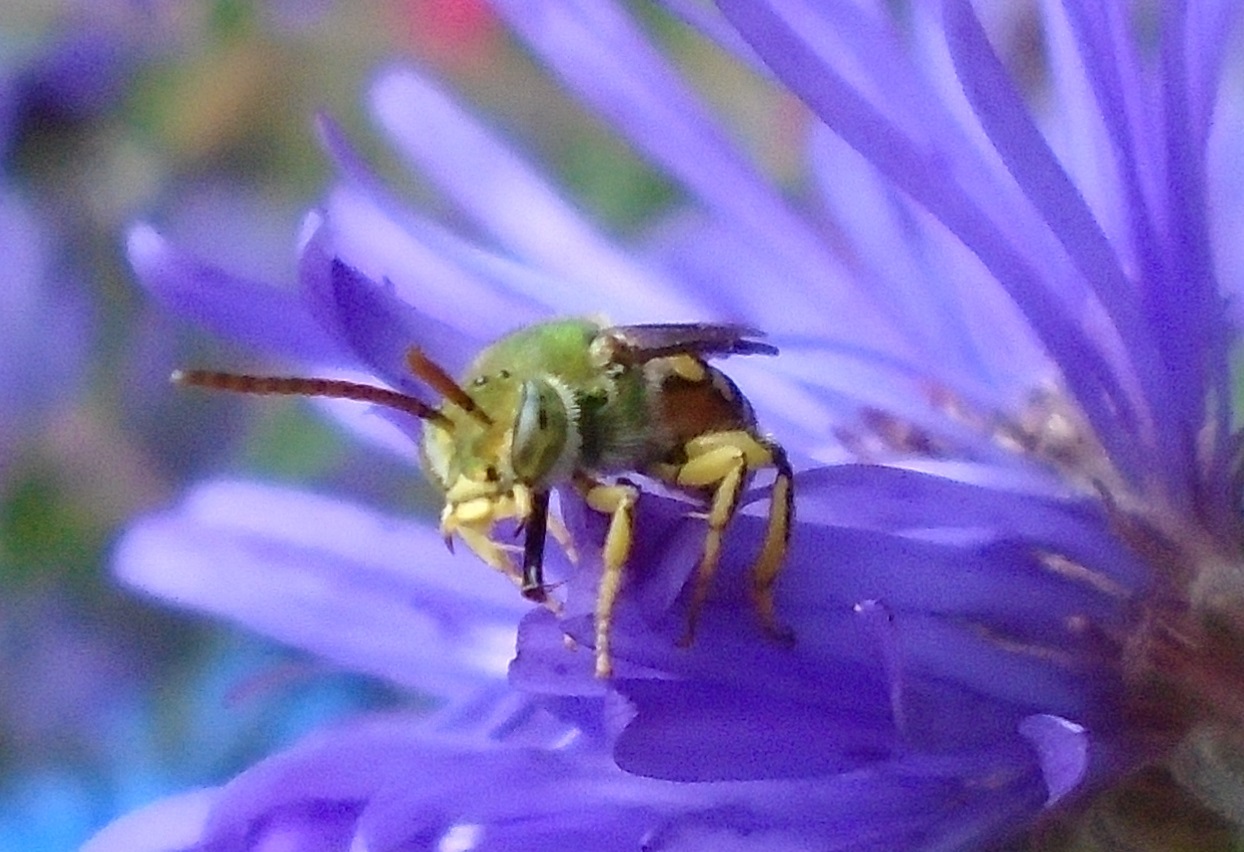
The spiders seem to be more numerous and more various, unless it's just that I am looking so hard for things nowadays. Here's a nice female common house spider. Do you remember the example of sexual dimorphism that is the male - female distinction in CHS's? (Hint: the male is red). Nestled in the goldenrod is what must be a tiny grass spider, bottom view and top view among all that mature gold. The last one is another TINY one. It is hard to tell from a crab spider at that size.
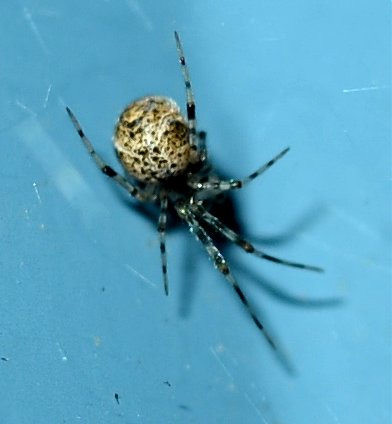
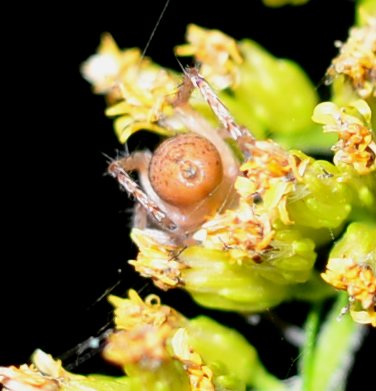
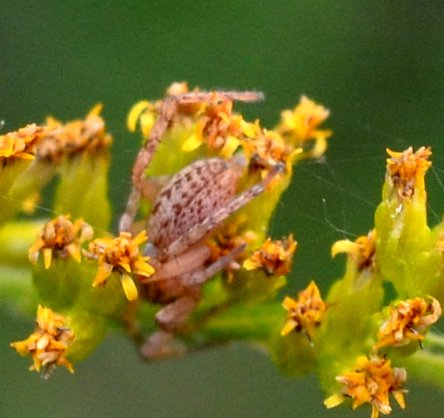
This one is another TINY "craborgrass". It is hard to tell a grass spider from a crab spider at that size. But size doesn't seem to matter in the case of this little guy who is only a few millimetres long but already has nice pedipalps. Hubba Hubba!
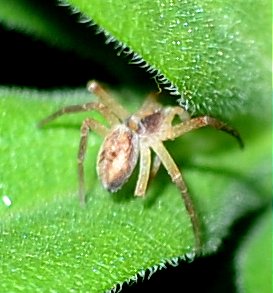
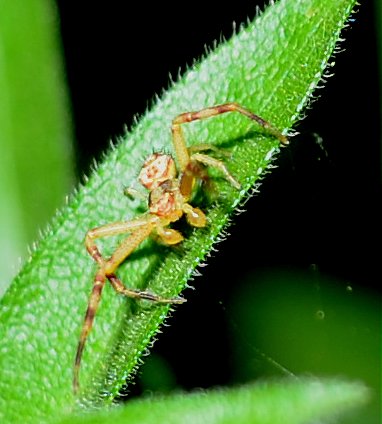
The bold jumper, Phidippus audax, was a big sissy this week. It would NOT come out of its hiding place between two aster leaves, so what you see here is all I got. But you can still make out its headlights even so. (To me it looked like a motorcycle with a fluffy seat.) A day or two after seeing the bold one, another one that must live under the shop came out (two of them in fact) to say hello. Not to get too close, but it is recognizable as Naphrys pulex, one we saw back in June. This time I had a hard time getting down to spider level. But I could just barely see its headlights!
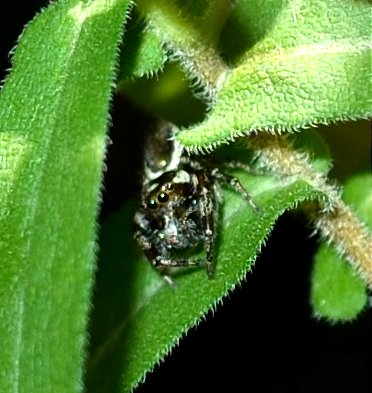
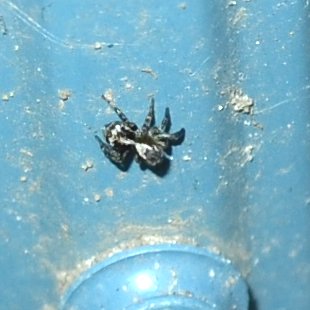
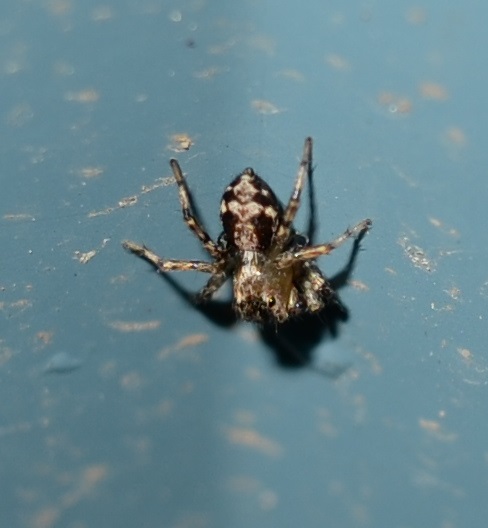
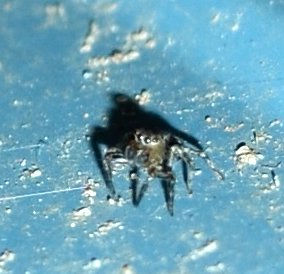
You may or may not remember all the tiny long-jawed spiders we saw early in the season? I was hoping to see them as adults the way we did last fall. I took the liberty of going back to the pictures from September 23 and 24 last year and selecting a couple to show you again. The long-jawed (could also have been called long-legged - their front legs are amazing!) spiders spin an orb above the water and also spin a zip-line from up in the asters down to the other side of the pond. In fact, that's how my friend and I spotted the first one - she had just slid down the zip-line to the shallows on the close end of the pond. When she saw us she also zipped back up the line. That evening and the next I got several pictures of her orb (just barely shows up in this first picture), and her antics as she slides down to catch any prey. Since these pictures were taken between 7:30 and 8:30 in the evening, I plan to be out there for a while this evening (before the lunar eclipse - oh so much to do!) to see if I can spot her again. If not, some of those babies must be living off-pond and coming in for evening pranks. Keep your eyes peeled!
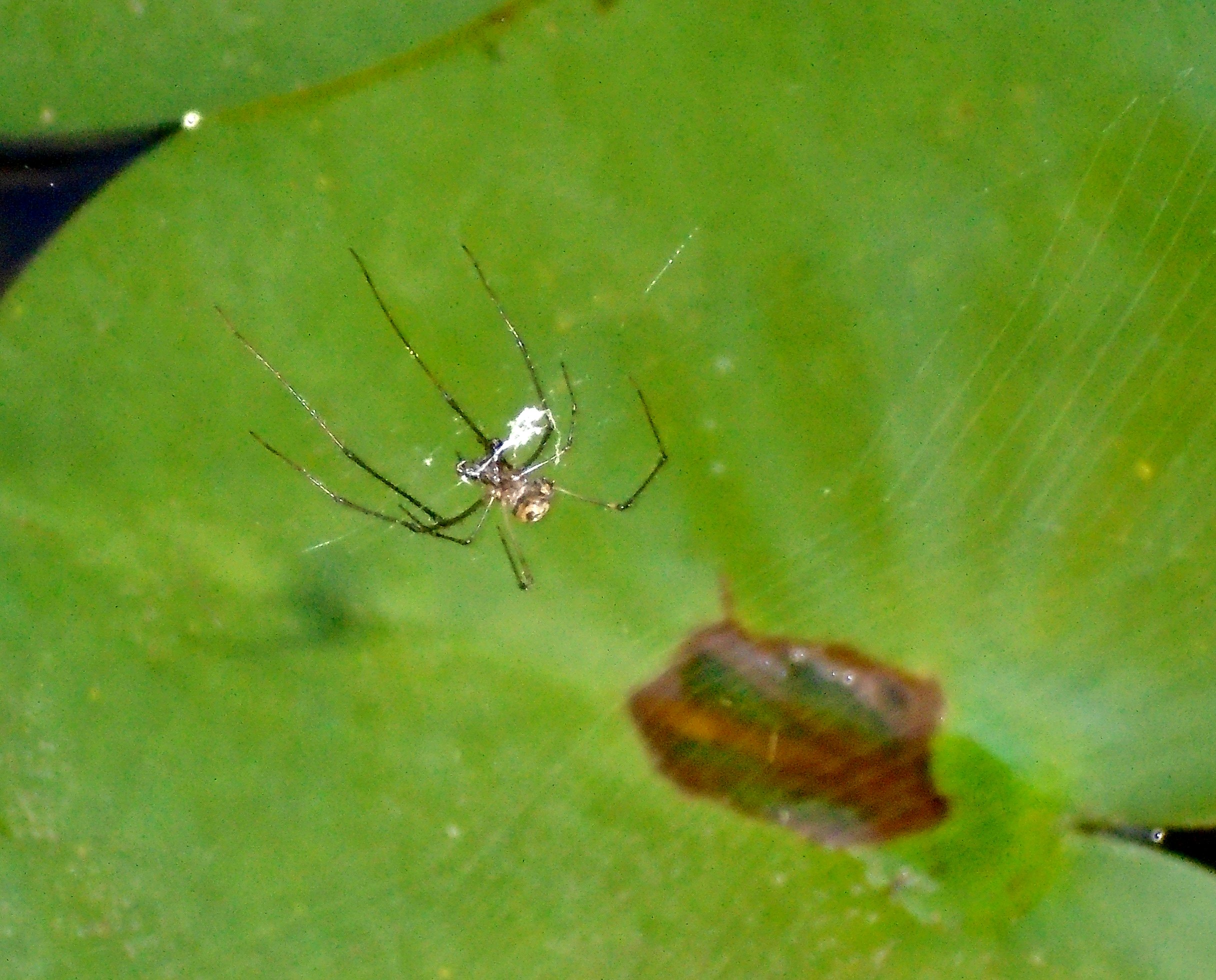
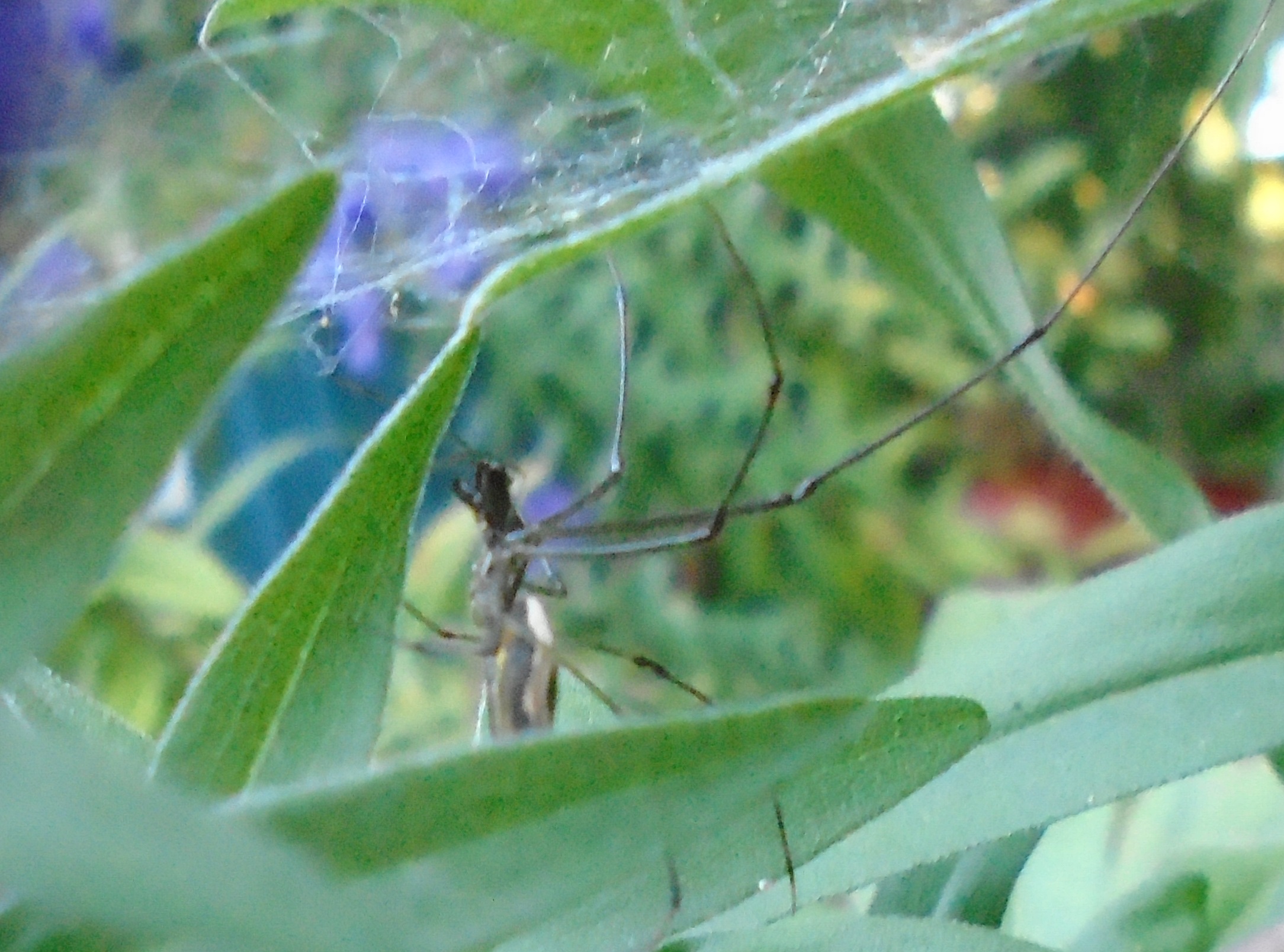
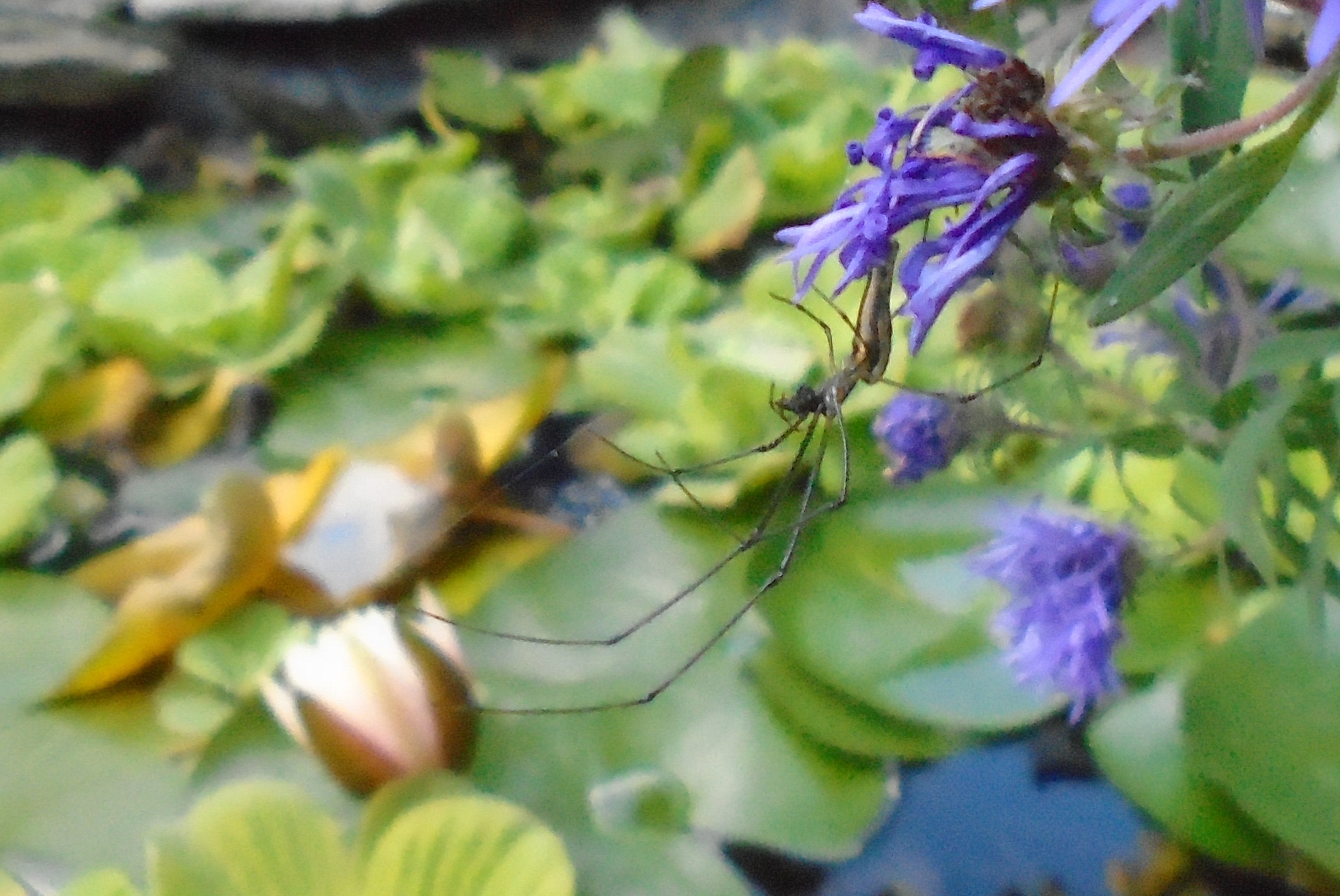
True confessions time. Do you remember the black fish who were supposed to be turning orange? They even had a bit of orange glow back in the spring. Well, now we are down to only one of the two and it is still no oranger than in the spring. Perhaps it is that it has a bit of shubunkin DNA - shubunkins can show all colors: red, black, orange, blue, white. Here is a family portrait, all gathered to snap up the fish food I pay them in order to get them to cooperate. Blackfish is near the top, right of center. Next is Blackfish all by him/herself. (I won't know till next year which sex - have to see who is chasing whom in the big orgy chase.) Anyway, he still has the orange glow but hasn't advanced a bit toward becoming an orange fish. Apologies!
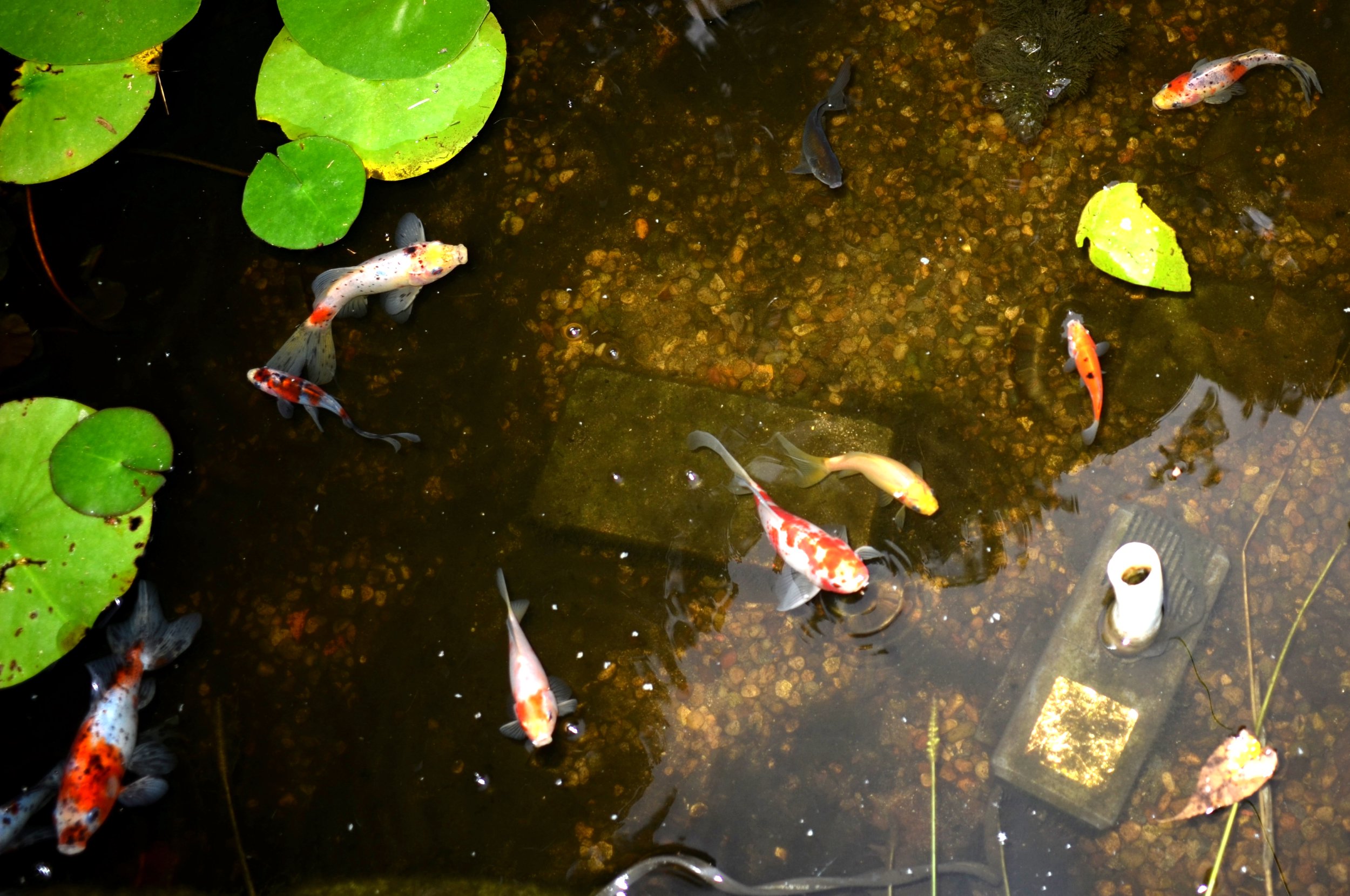
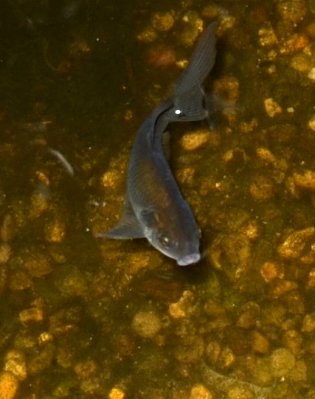
That about wraps it up for this week. I'm afraid there won't be many more - this blog is already considerably shorter than some of the summer ones. Leaves are falling - I will have to get someone to help me rake them - in the front at least. The backyard is not so bad - the leaves that fall act as a nice blanket for all the plants and animals down under there. Lazy is good. Knowing when to get some help is even better!
See you next week, take care!
Back to September 20
On to October 4
Back to 2015 menu
Back to main menu
copyright Martha O'Kennon 2015

































 female a 9 20 15.jpg)




















